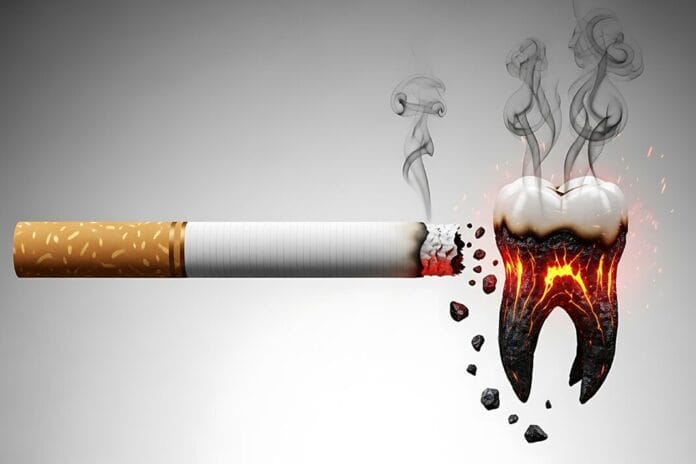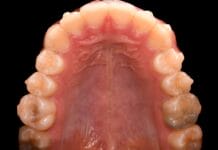Are you in need of CE credits? If so, check out our peer-reviewed, self-study CE courses here.
Test Your Tobacco and Nicotine Cessation Knowledge
1. Tobacco is the leading cause of preventable disease and death in the United States.
Tobacco is the leading cause of preventable disease and death in the United States, causing an estimated 480,000 deaths per year.1 Over 16 million people are living with a smoking-related disease. Beyond the human costs, smoking places a significant financial burden on U.S. citizens, as smoking-attributable healthcare spending exceeds $170 billion per year. This immense impact underscores the critical need for comprehensive tobacco and nicotine cessation interventions across the healthcare system.2
References
1. Health Effects of Tobacco Use. (2024, May 31). U.S. Food and Drug Administration. https://www.fda.gov/tobacco-products/public-health-education/health-effects-tobacco-use
2. Gajendra, S., McIntosh, S., Ghosh, S. Effects of Tobacco Product Use on Oral Health and the Role of Oral Healthcare Providers in Cessation: A Narrative Review. Tob Induc Dis. 2023; 21: 12. https://pmc.ncbi.nlm.nih.gov/articles/PMC9875717/
2. Which member of the dental team should be involved in tobacco and nicotine cessation interventions?
Tobacco or nicotine dependence requires cessation interventions by all healthcare professionals, including those in dentistry. The entire dental team should be involved in tobacco cessation efforts, including dentists, dental hygienists, and assistants.1
Dental hygienists are especially well-positioned to provide cessation interventions because they often establish stronger rapport with patients, making them more receptive to oral health educational messages.1
Reference
1. Gajendra, S., McIntosh, S., Ghosh, S. Effects of Tobacco Product Use on Oral Health and the Role of Oral Healthcare Providers in Cessation: A Narrative Review. Tob Induc Dis. 2023; 21: 12. https://pmc.ncbi.nlm.nih.gov/articles/PMC9875717/
3. The 5As model is considered a pharmacological cessation intervention.
Cessation interventions offered by dental professionals typically can be classified into three categories: brief, behavioral, and pharmacological. These interventions can be used individually or in combination with one another.1
The 5As model is a framework for providing a brief behavioral cessation intervention. This model is recommended for all healthcare providers to use with every patient.1
The 5As include:1
- Ask about tobacco/nicotine use
- Advise to quit
- Assess willingness to make a quit attempt
- Assist in quit attempt
- Arrange follow-up
If a patient is not ready to make a quit attempt within the next 30 days during the Assess step, the 5Rs strategy for motivational interviewing can be used to increase readiness for change.1
The 5Rs include:1
- Relevance: Encourage the patient to indicate why quitting is personally relevant.
- Risks: Ask the patient to identify potential negative consequences of tobacco/nicotine use.
- Rewards: Ask the patient to identify the potential benefits of stopping tobacco/nicotine use.
- Roadblocks: Ask the patient to identify barriers or impediments to quitting.
- Repetition: The motivational intervention should be repeated every time an unmotivated patient has an interaction with a clinician.
Reference
1. Gajendra, S., McIntosh, S., Ghosh, S. Effects of Tobacco Product Use on Oral Health and the Role of Oral Healthcare Providers in Cessation: A Narrative Review. Tob Induc Dis. 2023; 21: 12. https://pmc.ncbi.nlm.nih.gov/articles/PMC9875717/
4. Which of the following describes the abbreviated version of the 5As model for cessation intervention?
The Ask, Advise, Refer (AAR) three-step model was developed to overcome common barriers to the full 5As model, such as time constraints and limited expertise.1 AAR streamlines the process, focusing on:1,2
- Ask every patient about tobacco/nicotine use
- Advise the patient to quit
- Refer the patient to resources
If a patient is ready to quit, provide them with resources to support their cessation attempt. Several resources are available, for example:2,3
- Quitline: 1-800-QUIT-NOW
- Text messaging: Text QUIT to 47848
- Web-based interventions:
- Local cessation programs: Classes and support groups
References
1. Gajendra, S., McIntosh, S., Ghosh, S. Effects of Tobacco Product Use on Oral Health and the Role of Oral Healthcare Providers in Cessation: A Narrative Review. Tob Induc Dis. 2023; 21: 12. https://pmc.ncbi.nlm.nih.gov/articles/PMC9875717/
2. Oral Health Toolkit. (2024). American Lung Association. https://www.lung.org/getmedia/0a65a28c-1e71-470b-ac40-ea33326e7e03/OralHealthToolkit-2024DEC.pdf
3. How to Quit Smoking. (2024, September 27). Centers for Disease Control and Prevention. https://www.cdc.gov/tobacco/campaign/tips/quit-smoking/index.html
5. Which of the following is not an FDA-approved pharmacotherapy for smoking cessation?
Nicotine pouches are not an FDA-approved pharmacotherapy for smoking cessation. They are currently marketed as a tobacco-free nicotine product and have not been evaluated or approved by the FDA for therapeutic use as a smoking cessation aid.1
Pharmacological interventions specifically aid cessation by reducing the withdrawal symptoms and curbing nicotine cravings associated with quitting. The FDA currently approves seven pharmacotherapies as evidence-based treatments for smoking cessation, which fall into two main categories:2,3
- Nicotine replacement therapy (NRT)
- Nicotine patch
- Nicotine gum
- Nicotine lozenges
- Nicotine inhaler
- Nicotine nasal spray
- Non-nicotine prescription medications
- Varenicline
- Bupropion
Even brief smoking cessation advice from a healthcare professional, lasting only a few minutes, increases long-term quitting rates by 5% over minimal intervention. These success rates can be increased by 50–70% with the use of adjunctive pharmacotherapy, such as NRT.2 FDA-approved pharmacological and behavioral interventions offer a substantial benefit, both individually and in combination, to help non-pregnant adults quit.2,3
References
1. Nicotine Pouches. (2025, January 31). Centers for Disease Control and Prevention. https://www.cdc.gov/tobacco/nicotine-pouches/index.html
2. Gajendra, S., McIntosh, S., Ghosh, S. Effects of Tobacco Product Use on Oral Health and the Role of Oral Healthcare Providers in Cessation: A Narrative Review. Tob Induc Dis. 2023; 21: 12. https://pmc.ncbi.nlm.nih.gov/articles/PMC9875717/
3. Clinical Interventions to Treat Tobacco Use and Dependence Among Adults. (2024, May 15). Centers for Disease Control and Prevention. https://www.cdc.gov/tobacco/hcp/patient-care-settings/clinical.html












